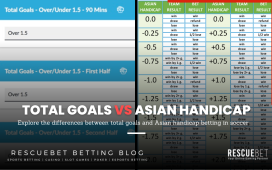All betting strategies come with their advantages and drawbacks. Some strategies have more proponents than others while other strategies have more critiques. No strategy is foolproof. However, punters with access to strategies tend to outperform punters who do not use any strategies. The same can be said for investors with and without a strategy. One of the key strategies both investors and punters use is the Kelly criterion.
What Is The Kelly Criterion?
The Kelly criterion is an important strategy. The strategy is adapted to various applications in practical life such as financing, investing, betting, portfolio management, risk management, and much more. In fact, the Kelly Criterion strategy was originally developed for a completely different field. And today, the strategy is applied in several other fields. The original theory was proposed by John Kelly in the 1950s. He originally used the strategy to help telecom companies reduce the static noise across long distances. However, the very same strategy has found its way into the stock markets and betting markets. Even the greatest investor of our generation, Warren Buffet has supposedly used the Kelly criterion when investing in equity. Punters use a very similar version of the Kelly criterion strategy. The Kelly Criterion is used when estimating bet sizes and making wagers.
An Example Of The Kelly Criterion
The Kelly Criterion strategy helps a punter establish the optimal bet size for any given bet. A punter can calculate the optimal bet size by:
- Consider the odds of winning – In a match between two opponents, one opponent may have a slight edge over the other. So let’s say that a punter has a 75% chance of winning the bet. The punter also has a 25% chance of losing that same bet.
- Double the winning probability – Then, a punter must convert the winning chance of 75% into a probability of 0.75. After this conversion, the probability must be multiplied by two. Thus, the punter will have 0.75*2 = 1.5.
- Subtract one – Next, the punter must subtract one from the current total. This results in 1.5-1 = 0.5.
- Optimal wager size – Based on the output above, the Kelly criterion suggests an optimal wager size of 50% of the punter’s total betting funds.
Features Of The Strategy
Some of the key features of the Kelly criterion include even-money bets, betting on multiple outcomes, estimating bet sizing, etc. And also, some of the criticisms gave rise to alternate theories such as fractional betting on the Kelly Criterion.
1. Applications On Even-Money Bets
The Kelly criterion has applications in even money bets. It’s easier for an individual to calculate the odds and bet size with just two even outcomes. An example of an even-money bet is betting on a win or loss in a football match with draw results not considered. Thus, the Kelly criterion is a strategy that’s easy to understand and apply, especially for novice punters.
2. Estimating Bet Size
The biggest application of the Kelly criterion by individual bettors and investors is estimating a bet or wager size. This helps a punter make the best allocation of available resources. Optimal allocation of resources ensures the best possible returns. Sizing up bets can be hard as too much wagered on risky bets equates to losses. On the other end, not enough wagered on winning bets result in missed potential earnings.
3. Applications On Multiple Betting Outcomes
Punters can bet on sporting events with multiple betting outcomes as well. Horse racing, hound racing, etc. using the Kelly criterion are examples of multiple betting outcomes. However, with more betting outcomes and multiple probabilities, it becomes a little harder to factor in all the variables while estimating an optimal bet size.
5. Level Of Risk
Not all bettors can afford to set their goals for the optimal bet size. This is because each punter is limited by their betting funds, betting style, and long-term strategy. Moreover, a punter looking to bet on multiple matches over time may be less inclined to spend 50% or more of their betting funds in a single wager. In fact, most punters are advised not to exceed 6% of their bankroll in a single bet.
Criticisms
The Kelly criterion strategy faces criticism because, in several instances, a punter may be asked to wager 50% or above of the punter’s bankroll. And this is with a possibility of losing the entire amount wagered. However, punters are advised to utilize a form of the kelly criterion adapted to the punter’s betting style. Examples include fractional betting or marginal betting.
Fractional Betting On Kelly Criterion
A punter looking to reduce the level of risk and beta associated with the Kelly Criterion can use a fractional betting strategy. An individual can set a high level of risk tolerance (such as up to 6%). Or a punter can set a low level of risk tolerance (such as below 2%). Based on the percentage of bankroll set, an individual with an optimal wager size of 50% (from the example above) will wager 50*2 = 1.00% of their bankroll in a single bet.
























